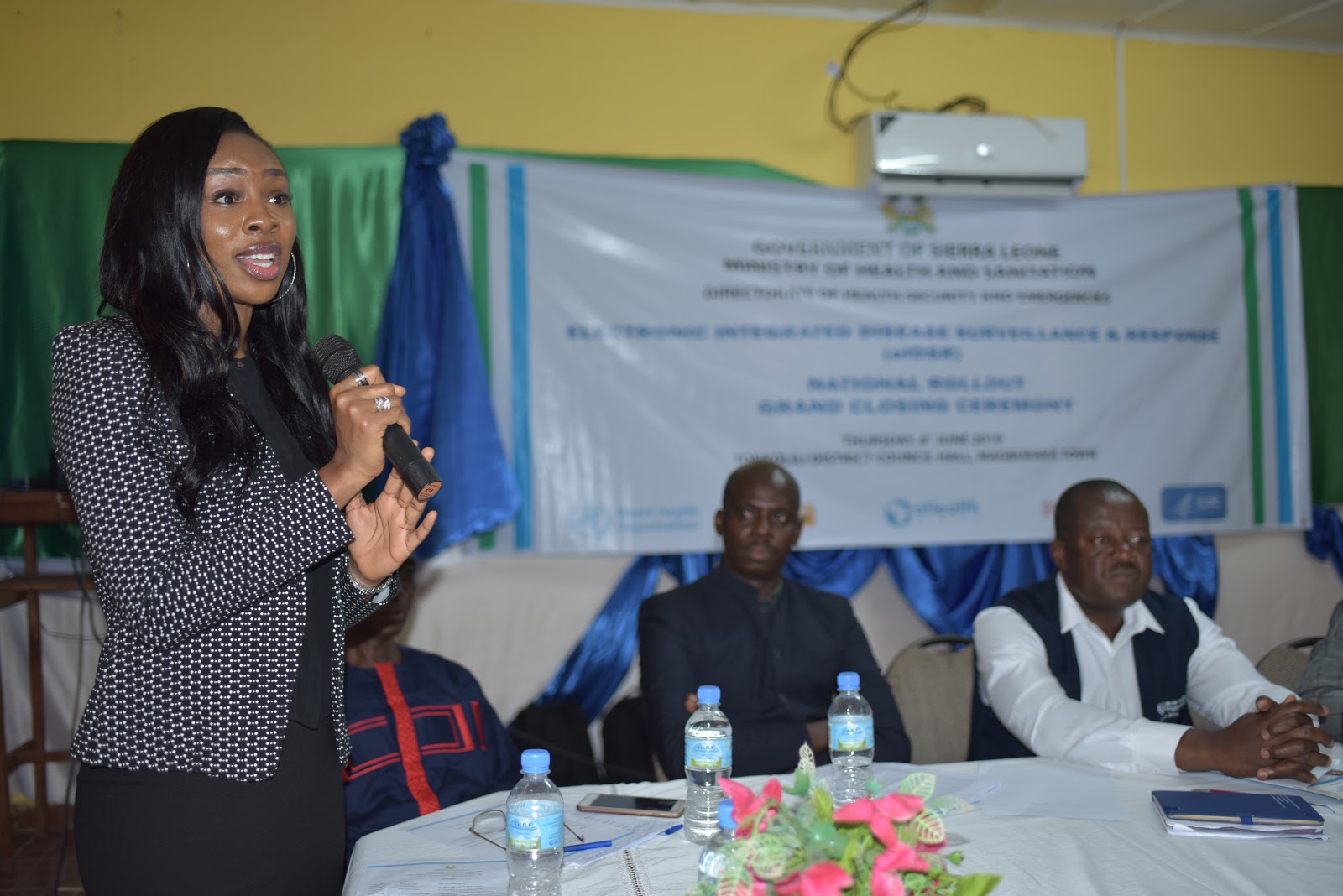By Sahr Ngaujah and Nelson Clemens
According to WHO, Sierra Leone is the first country in the Africa region to fully transform its national disease surveillance system from a paper-based system to a web-based electronic platform. This is due to the introduction of the electronic Integrated Disease Surveillance and Response solution.
Sierra Leone was one of the hardest-hit countries during the 2014 EVD outbreak in West Africa. The country’s poor disease surveillance infrastructure highlighted the need for a robust disease surveillance mechanism. Introducing an electronic method for disease surveillance reporting became one identified remedy for improving disease surveillance in a country that was still trying to catch up with the rest of the world in terms of digital technology.
Paper-based health data recording and reporting from across Sierra Leone’s 1300 health facilities became increasingly inadequate and inaccurate and was also characterized by late reporting, incomplete district-level reports, multiple data entry errors, and difficulty storing and retrieving data.
With an expertise in health informatics, eHealth Africa (eHA) designed the electronic Integrated Disease Surveillance and Response (eIDSR) solution and has been implementing the solution in collaboration with Sierra Leone’s Ministry of Health and Sanitation (MoHS), the U.S. Centers for Disease Control and Prevention (CDC), the World Health Organization, Focus 1000, and GIZ since 2016, with the objective to enhance disease prevention and control through the digital capture and submission of data on epidemiologically-important diseases. The eIDSR project was funded by the CDC.
eHA customized an open source health information tool from DHIS2 for the purpose-built digital data collection and reporting. The eIDSR tool is integrated into the national health system through its compatibility with the health information systemDHIS2, which is used in over 45 countries, especially those with vulnerable health systems like Sierra Leone. eHA developed the web form and custom mobile application, piloted both, and created a Short Message Service (SMS) submission solution for health workers to submit their weekly surveillance reports in locations where internet access is weak.
Nwanyibuife Obiako, Senior Programs Manager, eHA Sierra Leone, making a statement during the eIDSR rollout closing ceremony
As of June 2019, 2758 health care workers at the health facility and district level were trained by eHA on the use of eIDSR across Sierra Leone. These health care workers now monitor 26 disease categories digitally. Digitizing health-related data has yielded positive outcomes in Sierra Leone. eHA has supported the rollout of eIDSR to all 14 administrative districts in Sierra Leone and a ceremony was held on June 6th in Tonkolili district, with participants from the MoHS and other implementing partners, to celebrate the milestone achieved.
“Thanks to eIDSR, we have seen an improvement of multiple surveillance indicators, such as reporting completeness and timeliness. It’s evident that a critical part of this success is partnership and collaboration.”
Nelson Clemens, eHA’s eIDSR Project Coordinator presenting during the eIDSR rollout closing event
The eIDSR system has also enhanced:
Reduced data entry errors
Reporting completeness, timeliness, and efficiency
Reducing data entry error
Optimal data management and quality are crucial to the delivery of high-quality healthcare services. Accurate data is essential to informed decision making and appropriate public health action. In the past, when health care workers submitted their reports, there was no opportunity for their superiors to perform data quality assurance. This sometimes resulted in erroneous data being sent to the national level, reducing the quality of data used for disease surveillance in Sierra Leone. With eIDSR, digital data is now managed in an efficient manner at District and National levels and made available to all relevant parties in the quickest way possible.
“The electronic system has reduced the number of data entry errors in half, and is capturing and verifying data 60% faster than the paper-based IDSR system.”
Reporting completeness, timeliness, and efficiency
The eIDSR tool was created to improve the speed of the flow of information within health systems. Through the electronic Integrated Disease Surveillance Response (eIDSR) solution, disease prevention, and control is enhanced through timely electronic capture and submission of data on epidemiologically-important diseases as data can now be submitted, reviewed and acted upon near real-time.
“...My colleague Surveillance Officers would agree with me that eIDSR has relieved our stress. eIDSR roll-out commenced in the Kambia district in November 2018. A week following the roll-out, we achieved 98% of timeliness of reporting and has not gone below 90% since.”
Disease surveillance plays an important role in disease prevention, control and elimination.
eHA continues to work with its partners to ensure eIDSR is sustainable in Sierra Leone.



